Holocaust survivor: 'Wanting to be shot not gassed...I even kissed Mengele's boots', says care home resident
Ninety-year-old Sam Pivnik, who lives at Jewish Care’s Clore Manor Care Home, hasn’t celebrated his birthday since the German Nazis invaded Poland and took away his childhood in the village of Bedzin on the day he turned 13.

At an age when a Jewish boy becomes a man and a Bar Mitsvah, on 1 September 1939 when the Nazis came to town on his birthday - Sam Pivnik grew up fast.
"Sometimes we had more to eat sometimes we had less", says the man who lived in a household of ten. But his father’s artisan status as a tailor with his own shop meant they got by - until Hitler’s laws against Jews kicked in. Sam’s father lost his job, his status and his family were forced into Bedzin ghetto until they were put on cattle trucks on 6 August 1943 and sent to Auschwitz II-Birkenau concentration camp.
“I’m telling you God looked after me. The cattle trains...I can’t describe…it’s sheer God’s will to survive.”
When the train finally stopped, he heard people whisper: 'Say you are older, say you are 16’. Sam was 15. People below the age of 16 wouldn’t be taken into the camp but would instead be sent to the gas chamber.
He says that when he exited the train: “We were yelled at. Like cattle, whipped.” SS officers jabbed at them with guns as large dogs barked. Two groups were formed, families with old people, children and another with men aged from their teens to 50s. Sam’s mother shoved him in the direction of the men’s group telling him to save himself and get in line with the men. Sam did and told her he’d see her tomorrow. It was to be the last time he ever saw her.
His mother, father, sister Chana, brothers Meir, Wolf and Josef were all murdered in the gas chamber on arrival. His other sister Handel survived for 10 days before she too was selected for the gas chamber. “I couldn’t do anything for them or for myself”, he says, his eyes fixed ahead.
That day, Sam's hair was shaved, he was given a dead man’s striped uniform to wear and, as prisoner number ‘135913’, he began work at the Birkenau ramp. He listened as bolts on the cattle trucks were slid back and fresh arrivals he called ‘poor damned souls’ emerged from the trains blinking from the brightness.
Death lottery
Nazi documents confirm Sam survived half a year in Auschwitz - a rare feat. He describes the ‘selection process’ of people to the right given life, to the left gas.
To illustrate, Sam lifts his finger in the air and stares in the distance, imitating the action of the gloved hand belonging, he says, to the man known as the ‘Angel of Death’ Dr Josef Mengele. Sam’s finger darting this way and that, he says out loud: “Right. Left. Left. Right. Left.” At this time in his life, Sam the teenager is immortalised in a photograph at Auschwitz today. In his job as a rampkommando he was told to stand to the side by the train to prevent anyone who came out of it from slipping away from the ‘selection process’ past the throng. But he knows there was nowhere to run to.
Dragging the dead
He says: ‘I barely noticed them now. Toddlers clinging to their mothers. Orthodox elders trying to talk to the Kommando, asking for an explanation of the inexplicable, old people wide-eyed and shaking’, he wrote in a book about his life ‘Survivor: Auschwitz, The Death March And My Fight For Freedom’. His book, now read in classrooms, continues: ‘And I went about my business as I always did, dragging the stiff, sh*t-caked bodies out of the trucks, trying not to breathe in the stench. We laid them down on the concrete. It looked like a battlefield, as it always did.’
As the bodies were carted away, they made way for coats, bags and it was Sam’s job of emptying the trucks that helped him survive another day. There he scoffed bits of food left in the wagons and pocketed jewellery to bribe others.
He writes: ‘Everybody had been told to leave their belongings where they were. They’d all be returned to them later, after the showers. After the delousing. After the Zyklon B’.
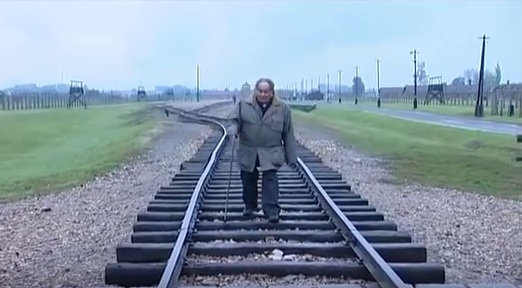
Sam cleaned and scrubbed the floors of the wagons like new, so they didn’t smell of urine and human misery. He says: "There were selections all the time – reducing the number of prisoners for gassing or for work". After surviving countless selections, that winter in December 1943, Sam suddenly fell ill of suspected typhus.
He says: ‘There was no calender in Auschwitz. No dates. No anniversaries, nothing to mark the passing of time.' The only hospital was a place of death. Spurred on by poor hygiene and low temperatures, his Judenfieber (‘Jew Fever’) which resulted in a 60 per cent death rate amongst prisoners, also gave him a hacking cough that he still has today.
'Angel of Death'
But when the ’Angel of Death’ Dr Mengele arrived, his will to survive made him get out of his bed and stand to attention. Described as a polite, immaculately-uniformed, somewhat handsome man, Mengele with SS officers had entered the room with a gloved finger ready to make a decision. Clad in a white coat and stethoscope, this doctor approached and Sam notes: ‘By the time he reached my bed I was literally shaking with terror.’
Sam states: ‘It took him seconds. The finger pointed to the left. The gas chamber. ‘I burst into tears, throwing myself at his feet, blurting out something about wanting to be shot, not gassed. I think I even kissed Mengele’s boots.' But just as suddenly those boots moved away. Sam notes that to this day 'I don’t know why he changed his mind.’
As the Third Reich collapsed and the Nazis retreated to Germany destroying evidence as they went, the boy from Poland was sent on a death march along icy roads with about 700 others. He had not eaten or drunk for two days. He was then loaded onto a train where many prisoners died. He could only watch helpless as their bodies were thrown out or used as another man’s meal.
But for more than a week Sam survived without any food or water. After nine days the train finally stopped and he was marched to another camp where he was tortured and worked almost to death. But he didn't die.
Swim of his life
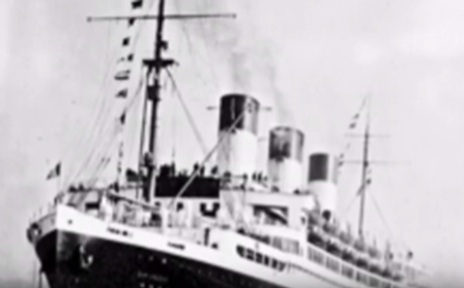
Later, he was forced on another death march. And later still onto a prisoner ship, the ‘Cap Arcona’. But a few hours after boarding, his vessel and another prisoner ship was attacked by RAF fighter bombers, set fire to and sank. As one of the last to board, Sam was on the upper deck and jumped. Sam then swam his emaciated body to the shore. Out of 7,000 people on the two ships, only 500 survived.
He says: “I wasn’t a swimmer. Lucky, my poor swimming helped me and the wind was going towards the coast. With God’s help, whatever I was hanging onto I got drifted onto the coast.”
His day of freedom finally came on 4 May 1945. He soon discovered his older brother Nathan was alive but his joyous reunion with him was bittersweet. A young man's anger unmellowed by the time, evident on his face, his expression changes as he says: “You cannot do justice, punishment enough to the people that did that to us. Be careful. The racists should be very careful not to let happen what was done against us. There is no room for prejudice.”
Sam Pivnik's book has been translated into many different languages and distributed in German classrooms. It went straight to the number one spot on German's best-selling biographies list after being released this year. His book has inspired school children across Germany to write him letters.
Maria Dziedziurska, manager at Clore Manor in Hendon, London said: “We are very proud of Sam, the next generation all over the world can understand what the Holocaust was through his personal testimony.”
Clore Manor’s activities co-ordinator Sharon Arad regularly gets the care home’s fellow Holocaust survivors together for tea, giving residents a chance to share their different experiences.
The health and social care charity Jewish Care supports 10,000 people a week. Jewish Care’s Holocaust Survivors Centre (HSC), a few miles away from the care home, is a social space for survivors offering activities and a range of therapies including counselling. More than 600 people visit the centre every week.
Latest Features News
 25-Nov-19
2019 Election: Boris Johnson leaves social care in 'too difficult box' but Labour vows to end 'crisis'
25-Nov-19
2019 Election: Boris Johnson leaves social care in 'too difficult box' but Labour vows to end 'crisis'
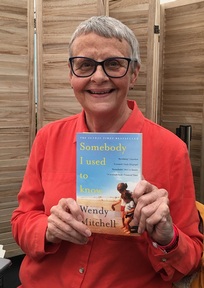 18-Oct-19
Podcast: Wendy Mitchell and dementia: 'My biggest fear is not knowing who my daughters are'
18-Oct-19
Podcast: Wendy Mitchell and dementia: 'My biggest fear is not knowing who my daughters are'
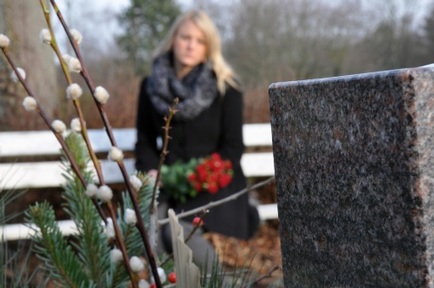 27-Sep-19
Exclusive: Care minister backs care workers' call for time off to grieve and attend funerals
27-Sep-19
Exclusive: Care minister backs care workers' call for time off to grieve and attend funerals
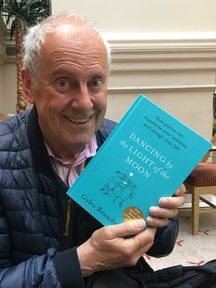 19-Sep-19
Podcast: Gyles Brandreth says poetry helps ward off dementia
19-Sep-19
Podcast: Gyles Brandreth says poetry helps ward off dementia
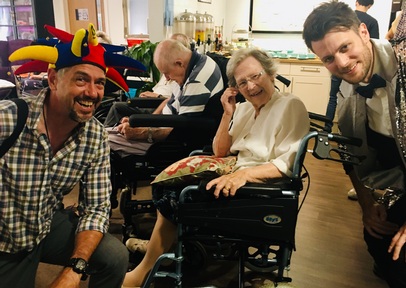 30-Aug-19
Edinburgh Fringe funnyman joins comics facing toughest audience at care home gig
30-Aug-19
Edinburgh Fringe funnyman joins comics facing toughest audience at care home gig